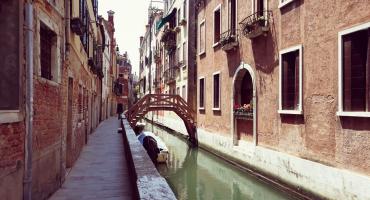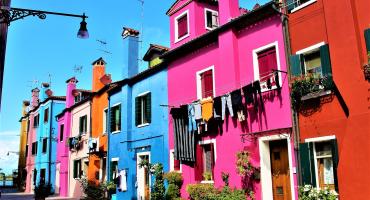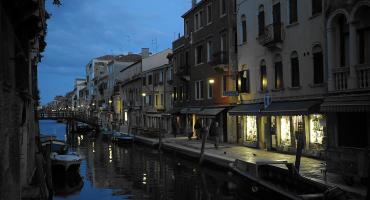No, don't worry, you read that correctly. The title of this article is indeed "10 Things NOT to Do in Venice". After all, if we were to tell you to visit the Doge's Palace, St. Mark's Basilica, or the Rialto Bridge, what new information would we be providing? Exactly, nothing new. And it's not an attempt to dissuade you from visiting certain places in the city that we don't consider worthy of a visit (because that would be pointless, as Venice is beautiful everywhere). The purpose of this article is something else. On one hand, we want to give you practical and effective advice to make the most of your experience in the city. On the other hand, we want to provide anyone visiting Venice, whether as a vacationing tourist or just a short-term visitor, with a list of 10 behaviors to avoid out of respect for this wonderful city, which is as beautiful as it is fragile, and for its residents, who say they are now desperate in the face of the continuous abuses the city has to endure. Since we are certain (or at least we hope) that we have already piqued your curiosity, let's not waste any more time and start our journey through the etiquette of the perfect visitor. Happy reading!
1 - Eating or drinking in St. Mark's Square
Unless you are billionaires, we strongly advise against dining at the establishments directly overlooking St. Mark's Square. Our warning has nothing to do with the quality of the products or the location, which is undoubtedly more than enchanting. The problem with these restaurants is their astronomical prices, which could challenge even Scrooge McDuck. All jokes aside, considering we are in one of the most beautiful squares in the world and a UNESCO World Heritage site, the high prices are understandable. Furthermore, some of these places boast being historic establishments, such as Caffè Florian, which opened in 1720 and is the oldest café in Italy. If you really don't want to miss out on a snack in St. Mark's Square, we recommend opting for an aperitif or a light snack. The price will be higher than you're used to, but lower than a full meal. Plus, you'll have the honor of being treated like true gentlemen or ladies from a bygone era.
2 - Feeding the pigeons
One of the things that most surprises visitors to Venice, besides its beauty, is the overwhelming presence of pigeons everywhere. Here, these birds are at home, and Venetians are no longer surprised by their massive presence, not even when one of them pops into shops and cafes, almost like a regular customer. However, one thing you must not do is feed them. While their presence may be intriguing, it takes very little for them to become a nuisance. As soon as someone throws food to even one pigeon, they will instantly be surrounded by a multitude of not-so-clean and not-so-charming birds. Tip: keep the crackers for yourself.
3 - Stopping to take photos in very narrow alleys or crowded bridges
Venice is beautiful, and you'll want to photograph every corner, every alley, every view from every bridge. Unfortunately, this is something you should avoid because, as you will quickly see once you arrive in Venice, the city is very small. Stopping every ten meters would cause serious inconveniences, not only to other tourists but especially to the Venetians who still live in the city and who every day have to battle against hordes of tourists just to leave their homes, go to work, or shop. These tourists, admiring souvenir shop windows or taking selfies on bridges, block the passage or even the entrance to homes. Our advice is this: don't stop too long in already crowded alleys or bridges (such as Rialto or Ponte dell'Accademia). Besides taking low-quality photos, you risk inciting the wrath of a hurried Venetian. Instead, walk with your head up, let yourself be enchanted by the city's wonders, and capture the views with your eyes before your camera. If you really don't want to miss the photo, come back at a calmer time or take your photos quickly and discreetly, without thinking you're the only ones on the street, disregarding other passersby.
4 - Having a picnic on the steps of churches, along the canals, or in front of someone's doorstep
Besides being visually unpleasant, it is also prohibited by the City Administration to stop with food and drinks in front of monuments, public interest sites, and especially in Piazza San Marco. This regulation is often not understood by everyone, especially families who visit the city for a day and do not want to spend time and money eating in one of the many public establishments. While the reasoning itself is not wrong, especially considering that eating in some restaurants can be quite expensive if you don't search well, there are a few points to consider. Firstly, with a "packed lunch," you do not support the local economy. Secondly, there are designated public areas for picnics (such as the public gardens of Castello), equipped with benches and, importantly, trash bins. Lastly, remember that Venice and its lagoon are a UNESCO World Heritage Site, an open-air museum. Would you ever dream of opening a packet of cold cuts inside the Louvre or the Uffizi Gallery? If the answer is no (as we hope it is), then why do it in Venice?
5 - Buying single rides on the vaporetto if you plan to use public transport frequently
If you are staying in Venice for several days (which we absolutely recommend) and plan to take the public vaporettos, forget about single rides. Public transportation in Venice is not exactly cheap; a single vaporetto ride costs 7.50 euros. We recommend opting for daily tickets that will allow you to save money if you want to avoid the crowds in the narrow streets and enjoy more than just a few boat trips.
6 - Dressing as if you were going to the beach
It's true that it gets hot in the summer; it's true that there are water, boats, and ports; it's true that the Lido is just a few kilometers away. However, the city of Venice is not a seaside resort. If you've decided to visit our city, you surely have seen from photos or videos that Venice is a real open-air museum, where historic buildings, squares, bridges, and old houses form a labyrinth of alleys and streets where people live their daily lives. Therefore, there is no place for beach towels, swimsuits, or sundresses, not even (and especially) by the canals on sunny days. Venice is an elegant and refined lady and deserves visitors who are respectful and appropriately dressed.
7 - Boarding the vaporetto with your backpack on
Returning to the theme of the "vaporetto." We recommend that once you board, you take off your backpack and hold it in front of you. Vaporettos, especially in the summer, are very crowded, and the volume of your backpack would take up space that could be used by others. It could also cause discomfort, particularly for children who, due to their height, might end up with your backpack right in their faces. Moreover, keeping your belongings in front of you allows you to monitor them better and prevent any unfortunate attempts to steal your phone, wallet, or other valuables.
8 - Swimming in the canals
Continuing with the previous point on decorous behavior, it is ABSOLUTELY FORBIDDEN to swim in the canals. It doesn't matter if you are Michael Phelps and swimming would be faster for you than walking. It doesn't even matter if you are Tania Cagnotto and could impress passersby with a double somersault with a twist from any height. Venice is not a swimming pool, and anyone who tries to take a dip in the Grand Canal or any other canal will be fined by the local police, with fines starting from 450 euros. If the threat of "illegality" is not enough to dissuade you, remember that swimming in Venice's canals is far from healthy. Unfortunately, Venice's canals have high pollution levels due to foul-smelling and toxic liquids discharged into the lagoon by nearby mainland industries, boat exhaust fumes, and the fauna inhabiting them (and no, it's not just little fish).
9 - Eating at snack bars if you seek authentic Venetian cuisine
Venice is not only loved for its artistic, historical, and cultural heritage or for its romantic and picturesque views. A significant attraction is also the local cuisine, primarily composed of dishes made with fresh fish. If you want to experience and know Venice thoroughly, don't settle for the anonymous and shabby snack bars that sell pizzas, sandwiches, and tramezzini that offer nothing new compared to those found in other major tourist cities. If you truly love food and good cuisine, take the time to seek out authentic Venetian osterias or bacari. These are usually found in the inner alleys, away from the tourist-filled central areas. And don't think they are necessarily expensive. Many osterias and trattorias offer honest and affordable prices while serving excellent quality food.
10 - Buying kitschy and non-local souvenirs from the many dubious Venetian-origin shops
While Venice has always been a melting pot of cultures and traditions from different parts of the world, it cannot be denied that buying masks, fans, gondolier hats, or T-shirts with "University of Venice" written on them from one of the many souvenir shops is not the best way to remember the city. This is not because the masks or hats don't reflect what can be seen in Venice, but rather because they do not reflect its identity. Most of the glass trinkets claimed to be from Murano, the lace said to be from Burano, or the masks sold as authentic Venetian are actually mass-produced in Eastern countries with low-quality materials and sold at rock-bottom prices. This situation harms local Venetian merchants, who are increasingly forced to close their shops to make way for new souvenir shops bordering on the tacky. Author's tip: make sure that the items you are purchasing are local. Even if you have to spend a bit more, at least you'll take home something that truly represents Venice without any deception.
Some images were sourced from the internet, with their origin and author cited where possible, and are shared for informational purposes only, in compliance with paragraph 1-bis of Article 70 of Law No. 633 of April 22, 1941, "Protection of Copyright and Other Rights Related to Its Exercise."
The material taken from the web has been in good faith considered to be in the public domain. Should their publication violate any copyright, please notify us so that we can proceed with their removal or modification. The blog authors are not responsible for linked sites or their content, which may change over time. The remaining material is the property of the site authors and is subject to copyright. No reproduction, even partial (in print or digital), is permitted without the explicit authorization of the authors. The texts on the site can be freely used for cultural and non-profit purposes, provided that the source, any text authors when indicated, the drafting and update dates, and the related URL are clearly cited
TAG
Categories



